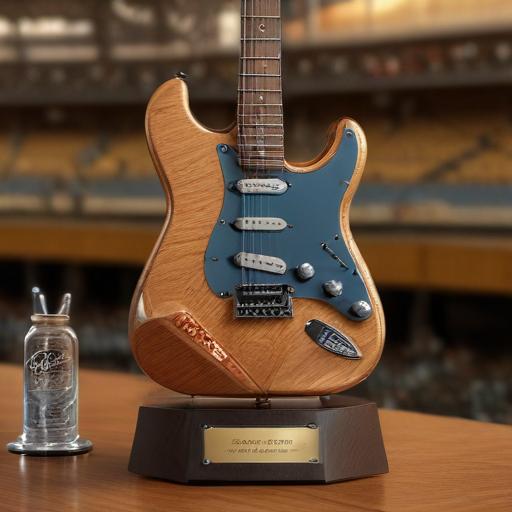Cal Raleigh and the Seattle Mariners claimed the Vedder Cup in a ceremony that blended baseball rivalries with rock-and-roll history, as Seattle defeated the San Diego Padres on August 25, 2025. The prize was far from a traditional trophy: a one-of-a-kind, fully playable custom electric guitar inspired by Eddie Vedder’s iconic Telecaster.
The trophy’s design nods to Vedder’s long-standing ties to both cities and to Pearl Jam’s hometown roots. Crafted in collaboration with Fender, the guitar is modeled after the same Telecaster Vedder plays on stage. Vedder himself took a test run, spending roughly an hour on the instrument to ensure it carried the energy he wants in a trophy that is meant to be played, not merely displayed. “He likes to put a little energy, spiritual energy, into an instrument,” Pearl Jam’s equipment manager, George Webb, explained. “So yeah, jammed on it for about an hour. Had a good time.”
The finished piece is packed with meaning and meticulous detail. The guitar’s body echoes Vedder’s signature instrument in specs, while a silver-and-black cresting wave wraps around the top from the strap button, hand-drawn by Vedder. The challenge of translating that wave into the airbrushed design was highlighted by Fender’s Chase Paul, who noted that matching the original graphics while ensuring it pops against the guitar’s silver background was the most difficult part of the project. The headstock bears Vedder’s autograph, and the body carries black interlocking team logos as well as engravings on the volume and tone knobs. An EB Research Partnership marking—an organization Vedder helped found with his wife, Jill—honors Vedder’s charitable work. Small chrome plates let the winning team engrave each season’s results, and an arrow with a mod symbol pays tribute to Vedder’s musical heroes, The Who.
The trophy isn’t a static keepsake. Vedder’s philosophy for this piece was clear: it should live in the team’s clubhouse and be played, not hung on a wall. The instrument is intended to be a living part of Mariners history, a symbol of ongoing competition and collaboration rather than a solitary trophy.
Behind the scenes, the build pushed the standard timeline. Fender’s team usually spends six months sourcing wood, mapping graphics, and testing; for the Vedder Cup, production ran in parallel with testing so the guitar could be finished in the weeks leading up to the announcement. The result was a living instrument that embodies both teams’ pride and Vedder’s personal touch, with the added feature of season-by-season customization.
The moment of lifting the Vedder Cup was also a nod to Vedder’s broader influence on music and sports culture. In a recent moment, Vedder himself debuted one of Jack White’s signature guitars on stage to perform a Pearl Jam deep cut, underscoring Vedder’s ongoing impact on gear, performance, and collaboration across genres.
Looking ahead, the Vedder Cup trophy marks a new milestone in the cross-cultural bond between Seattle and San Diego fans, leveraging a legendary guitarist’s legacy to celebrate a season-long rivalry. The living instrument not only commemorates a victory but also invites players to pick it up and play, fostering shared memories and a sense of ongoing camaraderie as the two baseball markets continue to follow Vedder’s musical and city-connected legacy.
If you’re hoping for a positive, forward-looking takeaway: this trophy embodies collaboration between music and sport, charity through EB Research Partnership, and the idea that trophies can be playable, evolving artifacts that strengthen team spirit year after year.
Summary: Seattle’s Cal Raleigh lifted a unique, playable guitar trophy designed by Eddie Vedder and Fender to celebrate the Vedder Cup—an official MLB honor linking Seattle and San Diego fans through a shared musical and sports heritage. The instrument carries Vedder’s signatures and custom artwork, is intended to be played by players, and includes charitable and commemorative elements that extend beyond the field. It’s a symbol of living history, team pride, and community impact.
